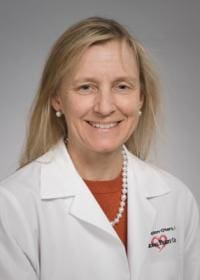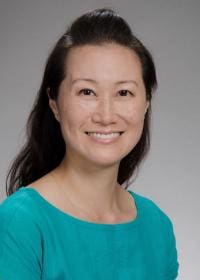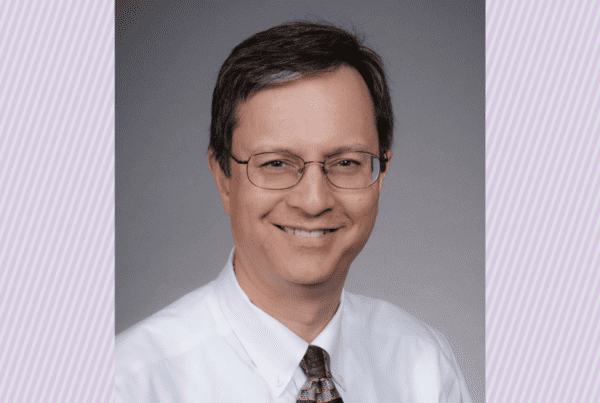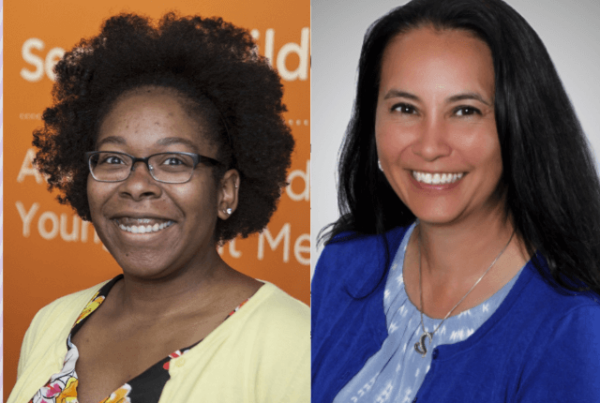The gender gap may be closing in the medical field, but female physicians are still significantly underrepresented in cardiology. The following specialists — a recognized pioneer and recent fellowship graduate — share their unique journeys from medical school to cardiology sub-specialty at UW Medicine.
Transplant cardiologist: April Stempien-Otero

April Stempien-Otero, MD, FACC
April Stempien-Otero, MD, FACC, is a respected heart failure transplant cardiologist. She has participated in multiple clinical trials and co-edited the recently published Springer Reference Volume “Contemporary Heart Transplantation.” She has also been listed as Best Doctor in America for over a decade and has been appointed to major committees of the American Heart Association and United Network for Organ Sharing.
Stempien-Otero conducts novel research in the mechanisms of advanced heart failure and novel pharmaceuticals to reverse inflammation and fibrosis.
Motivated by a mentor
How did I choose cardiology? At the beginning, I had a mentor who was just extraordinary. He encouraged me and put a lot of trust in me. I think the fact that he had four daughters may have helped part of his approach to mentoring me.
I was in college and had a term off from Dartmouth. I was looking for a job in medicine to get some exposure. The head of paramedics at the University of Connecticut Medical Center offered me a position. After I started, he gave me a research project on cardiac arrest and outcomes associated with calcium therapy. I did the research project — I conducted a retrospective study of all the cardiac arrests that the paramedics had resuscitated in the field and concluded that calcium administration was actually detrimental in cardiac arrest. I took my findings to the head of Pharmacology, who then took me to the head of cardiology. “‘That’s fantastic;’ he said. ‘Let’s write a paper.'” And we did.
Meanwhile another paper came out with similar findings. The following year the guidelines for cardiac arrest were changed and calcium was taken out. I thought, “I can do research and change the practice of medicine.”
Being a pioneer
When I completed my undergraduate work at Dartmouth College, women made up only 35% of the program I was in. There were only five women in my residency class. At some point along the way, I was told that women couldn’t become interventional cardiologists.
It was a relief when I came to the University of Washington for my fellowship in 1997. At UW, there doesn’t seem to be the same climate.
Today, there continues to be a perception that cardiology is a male-dominated field. I forget this at the University of Washington because we have so many women faculty. When I go to a large national meeting, however, I look around and I see it. Women have made strides in cardiology because they have been extraordinary, but it doesn’t mean all of us have been able to make that same journey.
Impacting the future of cardiovascular care
I am currently part of a national trial on a novel drug for heart failure. In patients who have idiopathic cardiomyopathy, we know that approximately 30-50% are a result of a genetic mutation. The drug we are investigating is going for an orphan designation to treat patients with a specific genetic cardiomyopathy. We are currently working to get more of these patients genetically tested — not just for the trial, but for their kids, siblings and extended family members to make them aware of a possible genetic vulnerability. In the future, this new drug could be applicable to different types of heart failure. I’m excited to be part of it.
Interventional cardiologist: Christine Chung

Christine Chung, MD
Christine Chung, MD, is an interventional cardiologist specializing in the management of structural heart disease and coronary artery disease. Her clinical interests include all forms of valvular heart disease, left atrial appendage closure, closure of patent foramen ovale and atrial septal defects, alcohol septal ablation, percutaneous coronary intervention, and cardiogenic shock.
She recently joined the cardiology division at the University of Washington School of Medicine as an assistant professor of medicine.
An interest in interventional cardiology
When I first started my general cardiology fellowship, I thought I wanted to be in heart failure. I was drawn to the acute shock population, mechanical circulatory support and that subset of heart failure patients that get acutely sick. These interests ended up overlapping very nicely with what interventional cardiology brings to the table — being able to directly intervene and offer therapies that otherwise would not be possible.
As I gained increasing exposure to the cath lab, I found interventional cardiology was something I enjoyed, among a group of people I could relate to. I also made a conscious decision that I was going to be a woman in a male dominated field. It meant a lot to me to have the potential to contribute something outside of just the medical aspect of things. Being present in a field where you’re not the average person helps to set a precedent and add a unique voice. That’s ultimately why I chose to do interventional cardiology.
I feel fortunate that at no point in my training was I looked down upon or felt to be of a lower potential. I have not felt that gender bias. When you are a woman in a male-dominated field, your male mentors are hugely important. All the male mentors I had were very supportive and treated me as a unique individual.
A difficult case study
One patient that I won’t forget is someone I took care of as a resident. The reason why he stays with me is that he was so young. He was in his early 20s. He came in with cardiomyopathy. There had been some history of drinking, but he just got really sick. He required mechanical support and a transplant workup. All of this was new and overwhelming to him and his family.
At such a young age, you want to offer the full range of therapies. Even though there may be some element of lifestyle and personal choices that contributed to his condition, you still wanted to give someone that young the benefit of the doubt that he could turn things around, make the right choices, and take care of the transplant.
But there’s a huge leap of faith you take when someone hasn’t yet had an opportunity to demonstrate that pattern of conscientious behavior and you’re dealing with a very limited and precious resource. So there’s a moral and ethical dilemma. As a physician, there is some conflict between doing the best for your patient but recognizing that the choices we make influence society as a whole. That one case exemplified for me the difficult decision-making that goes into being a good doctor.
A bright future
I think that at each step of this long journey there are decisions that are weighed somewhat differently for women than men. There are all these unique things that influence our decision-making as women in this field. In that sense, I can share my experiences to other fellows and trainees. If my personal experiences can help others in some way — even just being an example of what may be possible — then I think that’s great.
I came to the University of Washington to be a part of a major academic institution that was involved in cutting-edge clinical trials. In the field of structural heart disease — where there’s so much active device innovation happening, especially in mitral and tricuspid therapies — I wanted to be where there was access to pioneering trials and advanced therapies to offer patients.
This article was originally published on Doximity.com.


